28 Olympics Facts That Are Everything From Shocking To Inspiring To Just Plain Weird
1.French figure skater Surya Bonaly fell during her short program at the 1998 Nagano Games. Since she knew she couldn't medal after the mistake, she decided to make herself unforgettable anyway. Bonaly pulled off a move that has been banned since 1976: She did a backflip and landed on the blade of one skate. Bonaly lost points but made history, and the trick hasn't been repeated since.
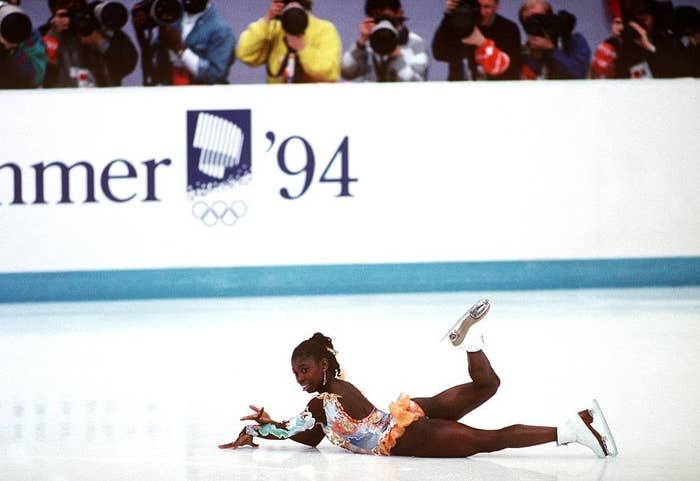
Here's a clip of Bonaly and others recounting the moment:
2.Paul McCartney earned the handsome sum of a single pound ($1.57 USD) for his performance at the London Olympics opening ceremony in 2012. Though he and other musicians who performed "essentially donated their time," they needed to earn some amount of money to make their contracts official.
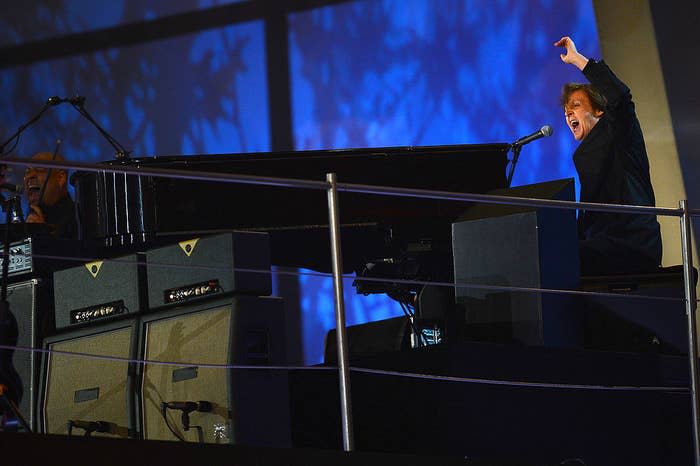
Here's a clip of his performance:
3.The organizers of that same opening ceremony approached Bill Curbishley, manager of the Who, to ask if drummer Keith Moon would be interested in performing. That's all well and good, except for one slight problem: Moon had been dead for 34 years at that point. Curbishley quipped, "If they have a round table, some glasses, and candles, we might contact him."

4.From 1912 to 1954, the Olympics awarded medals for art. Alongside events like gymnastics and swimming, an Olympian could compete in "painting, sculpture, architecture, literature, and music," so long as whatever they were submitting was "inspired by the concept of sport." These competitions were eventually scrapped because they blurred the line between amateurism and professionalism, since artists "inherently rely on selling their work for their livelihood" and the then-president of the International Olympic Committee was a staunch supporter of amateurs.
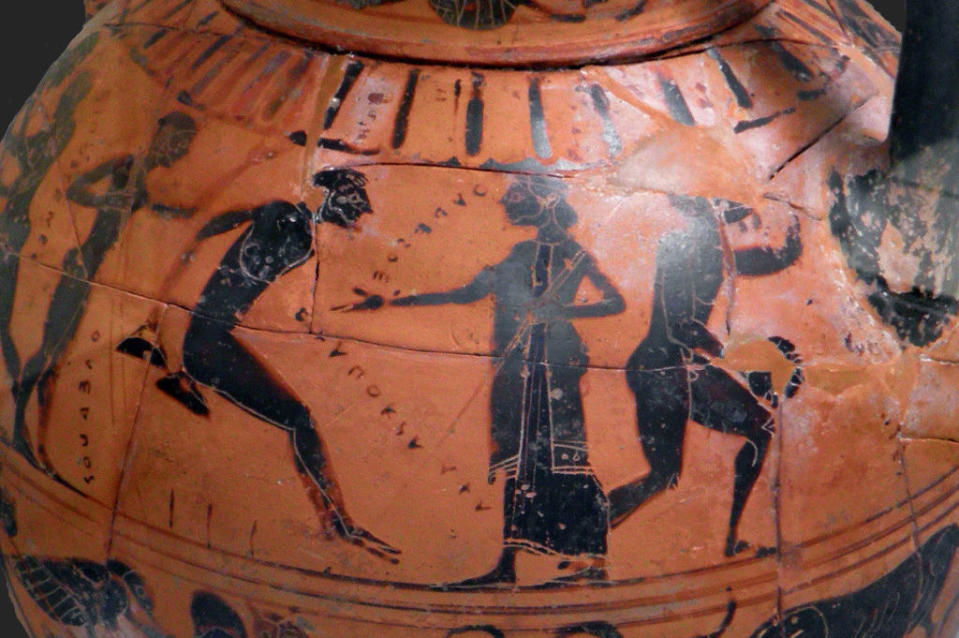
5.Australia ordered 70,000 condoms for the 2000 Games, but halfway through, they ran out and had to purchase 20,000 more. During the next Summer Games in Athens, Durex donated 130,000 condoms to "smooth the performance of the world’s elite sports people in the arena and under the covers." And 12 years later in Rio de Janeiro, organizers supplied the Olympic Village with a jaw-dropping 450,000 condoms, which worked out to 42 per athlete.
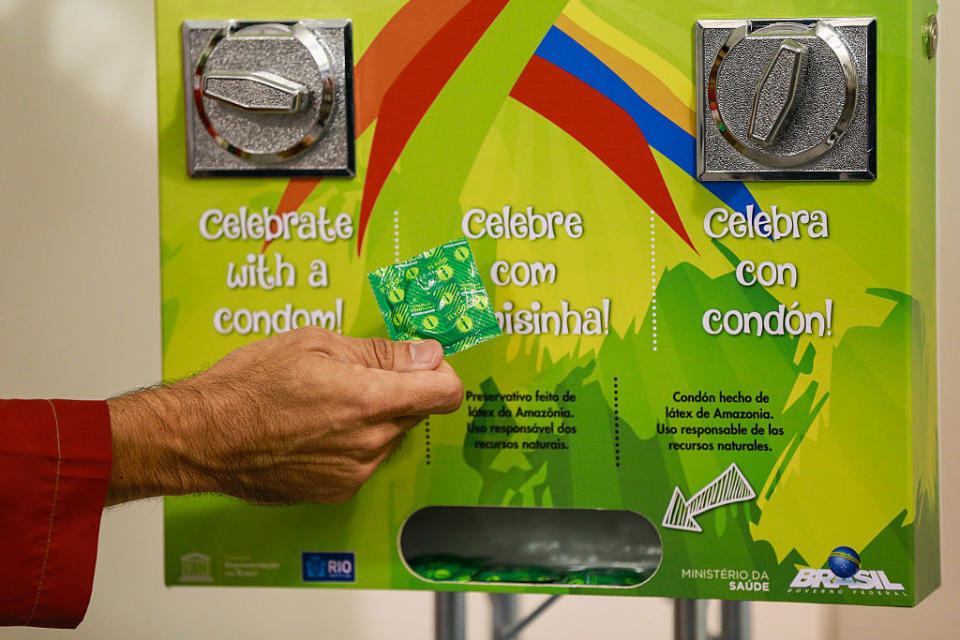
This is a condom dispenser from inside the Rio Olympic Village. Note the cheerful instruction: "Celebrate with a condom!"
6.During the 2002 Winter Olympics 1,000-meter short track speed skating final, Australian Steven Bradbury was far behind his four fellow competitors. So far, in fact, that when the rest of the men got tangled in a collision, Bradbury was able to avoid the mess and, as a result, win the gold. It was Australia's first Winter Olympics gold medal. Bradbury said, "I wasn't as strong as the other guys out there, but I am going to take it... God smiles on you some days and this is my day."
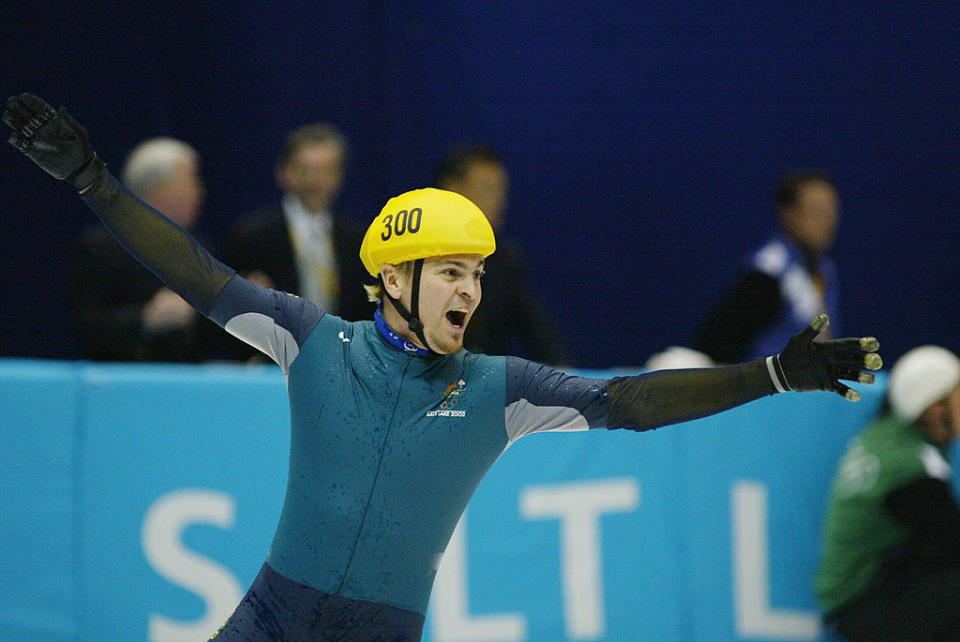
Here's the story of his victory:
7.The 1904 Olympic Marathon was "one of the most bizarre races ever run." Many of the competitors had never run a marathon before, including a man who showed up in full-length dress pants, and the route wasn't paved, which meant athletes had to contend with "clusters of dust" that made it difficult to breathe. Only 14 out of 32 men crossed the finish line. And Fred Lorz, the guy who seemingly "won," got a ride in a car for 11 miles of the race after getting a cramp.
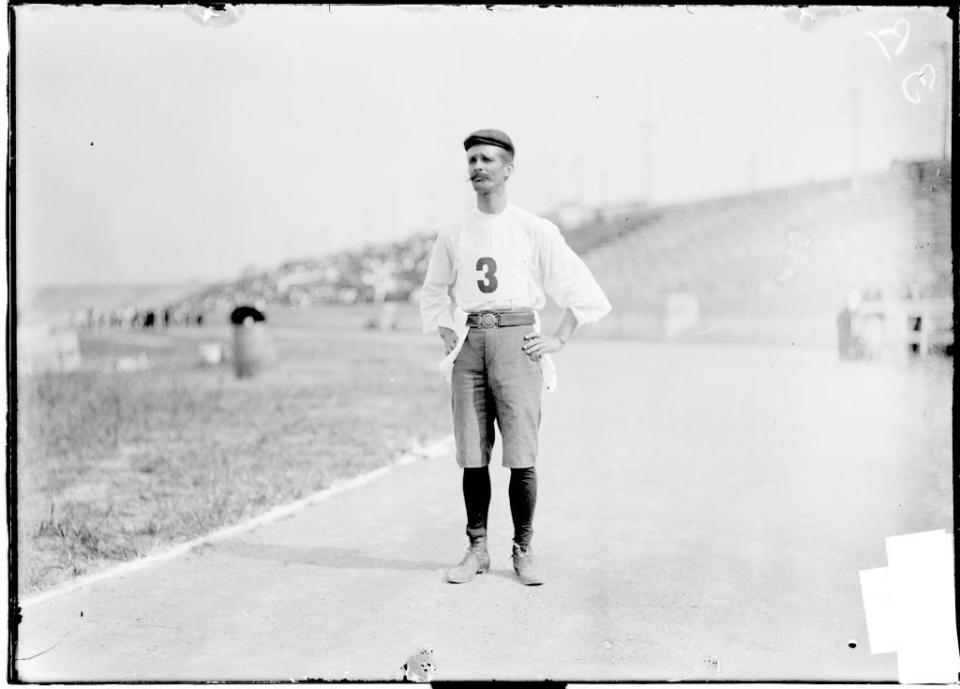
Another Olympian, Félix Carvajal, got hungry midway through, ate some apples from a random orchard, and then stopped to take a nap when the rotten fruit caused stomach pains (he finished fourth). The gold medal ultimately went to Thomas Hicks, who was carried over the finish line by trainers after he started hallucinating that he still had another 20 miles to run. (Pictured is Félix, the rotten apple guy.)
8.The Lithuanian basketball team couldn't afford to participate in the 1992 Summer Olympics in Barcelona following the collapse of the Soviet Union, but they got some monetary assistance from an unexpected source: the Grateful Dead. The band donated some cash but more importantly, gave the team permission to sell Olympics / Grateful Dead merchandise, allowing them to fund their trip and win bronze. Naturally, the team competed in uniforms tie-dyed with Lithuania's national colors of yellow, green, and red.

The band was inspired to help out because Lithuania had just regained its independence and this was the first time since the 1940s that Lithuanian athletes weren't forced to compete for the USSR.
Here's the trailer for a documentary made about the team:
9.In honor of the Los Angeles Olympics, McDonald's offered free burgers, fries, and Cokes "every time a US athlete reached the medals podium." However, when the Soviet Union (an Olympic "powerhouse") decided to boycott the 1984 Games, America went on an unprecedented winning streak...and some McDonald's locations "ran short of hamburger buns." One representative said that while the promotion was a huge success, it was also the "most costly" in the company's history.

10.The top eight competitors in each sport receive an Olympic Diploma. The diplomas awarded to medalists "correspond with their gold, silver, and bronze medals," while the others are "simpler." In 1896, when the tradition (and the modern Olympics as a whole) began, only the first place finisher received a diploma, but they've gone to the top eight since 1984.

11.During the Torino Games in 2006, Canadian skier Sara Renner broke her ski pole midway through an event. Norwegian ski coach Bjornar Haakensmoen handed her a spare one, and the Canadians went on to win silver while the Norwegians came in fourth. To show their gratitude for the moment of true sportsmanship, the Canadians presented Haakensmoen with "more than five tons of Canadian maple syrup." Fans donated the syrup "as part of a drive called Project Maple Syrup" (classic), and both governments agreed to waive import duties so that Haakensmoen could afford to accept the gift. Haakensmoen had actually only recently tried syrup for the first time and called it "sweet, and a little unusual." Hopefully he developed a taste for it.

Here's a clip of the moment Haakensmoen earned his syrup:
12.The medals for the Tokyo Games are made from gold, silver, and bronze extracted from recycled electronics, such as "discarded smartphones, digital cameras, and other handheld games and laptops."

13.Josy Barthel of Luxembourg was an underdog at the 1952 Summer Olympics in Helsinki, but that didn't stop him from winning gold for the men’s 1,500-meter race. His victory was so unexpected that the band, "unequipped with the necessary sheet music," had to improvise their way through the national anthem of Luxembourg when Barthel was presented with his medal.

14.At the 1936 Olympics, two countries made an uncomfortable discovery: They had the exact same national flag. The flags of Haiti and Liechtenstein shared the same horizontal blue-red stripes, so the next year, Liechtenstein added a crown to their blue stripe, to represent "the unity of the people and their prince" (and also, you know, the fact that they're not the same country as Haiti). Haiti's flag also evolved over the years and now involves a coat of arms, though the two nations kept the blue-red color scheme.
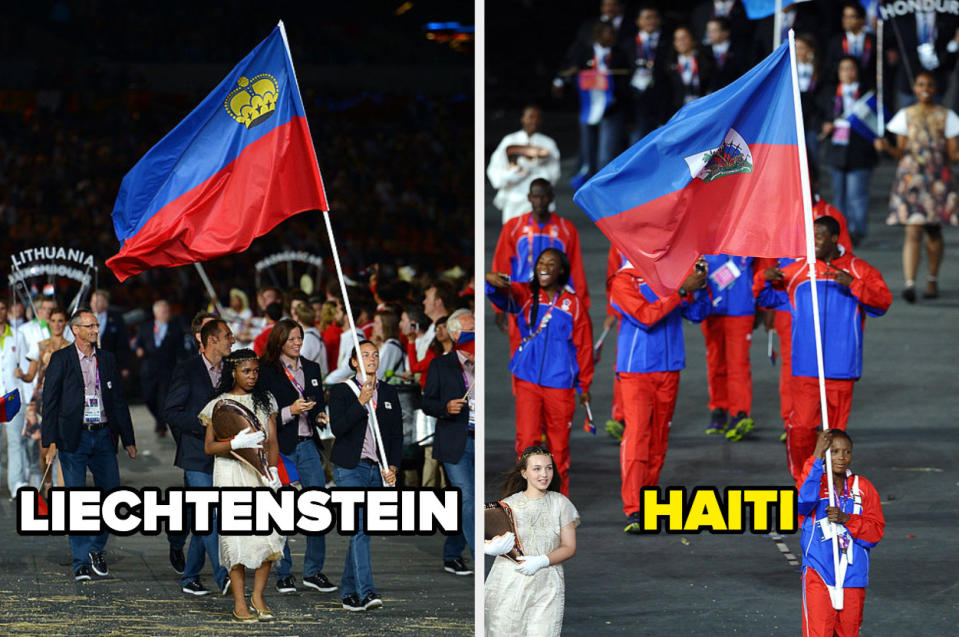
15.The Olympic Village McDonald's is free for athletes and coaches but at the 2016 Games in Rio, the fast-food establishment capped the amount of items you could order at any one time at 20. The popularity of McDonald's among Olympians necessitated placing some kind of limitation on the deal.
16.The digital scoreboards used at the 1976 Montreal Games were programmed to display three digits, with the highest score they could theoretically display being 9.95. The International Gymnastics Federation assured people that no one could score a perfect 10, so the technological shortcoming wasn't a big deal. Enter Romanian gymnast Nadia Comaneci. At the age of 14, Comaneci scored 7 of them while competing at the Montreal Olympics. Whenever she got another 10, the scoreboard would display 1.00 instead, since they literally had not been programmed for perfection.
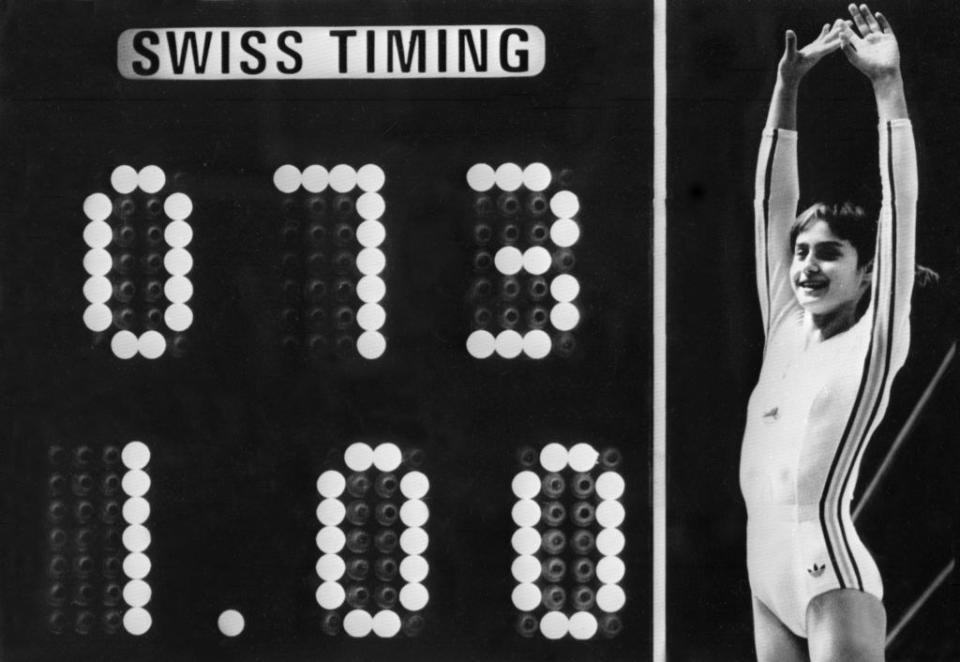
Here's a video of Comaneci's performance on the uneven bars:
17.Those giant inflatable tube men you probably associate with car dealerships were actually invented for the Atlanta Olympics. The inventor, famed puppet artist Peter Minshall, was inspired by the "limpid, loose, and graceful" dancing style of Carnival celebrants in his native Trinidad and Tobago. They were used in the 1996 opening ceremony and have stuck around ever since.

18.Tug of war was an Olympic sport from 1900 to 1920. Great Britain won the most medals in the event (five), closely followed by the United States (three).
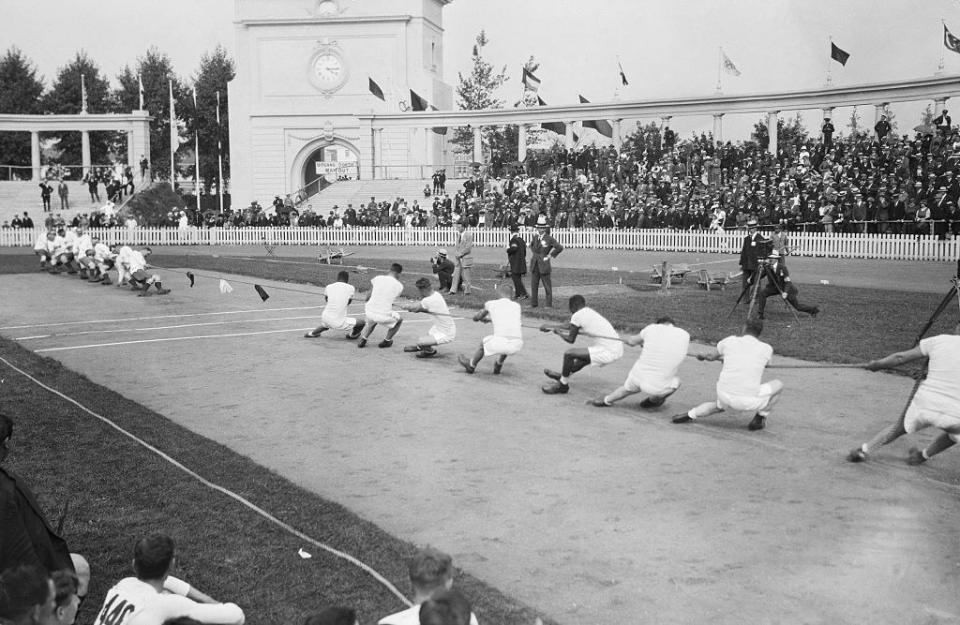
Pictured is the 1920 matchup between Great Britain and the US. The British won this particular round.
19.At the 1984, 1988, and 1992 Games, spectators could check out "solo synchronized swimming," in which competitors synchronized not with their fellow swimmers but with...the music? Maybe? One too many people asked why it existed, and the competition was "folded into a team event."

This is Tracie Ruiz, the solo synchronized swimming champion from the 1984 Summer Games.
20.Shuhei Nishida and Sueo Oe were Japanese pole vaulters who competed at the 1936 Olympics, and they also just so happened to be friends. When they were told they had to compete against each other to determine which one would take home silver and which one bronze, they refused since they "wanted to share the honors." They weren't allowed to and the Japanese team was told to choose which man got which medal. They awarded the silver to Nishida based on his earlier performance in the contest but it didn't end up mattering much. When the pair returned to Japan, they had their medals cut in half and then "fused into two hybrid medals," which became known as "the Medals of Friendship."

21.US gymnast George Eyser won six medals in the 1904 Games "with the use of only one flesh-and-blood leg." He lost the limb in childhood after being hit by a train, and used a wooden prosthetic. (Apparently, the catastrophic injuries soldiers faced during the Civil War resulted in some unexpectedly advanced prosthetics.) He won his medals over the course of just a single day, earning gold for the parallel bars, 25-foot rope climbing, and the long-horse vault; silver for pommel horse; and bronze for the horizontal bar.
22.The 2012 Olympics were the first to allow women to compete in boxing, meaning that they also marked the first time women competed in every Summer Olympics event. Since 1991, every new Olympic event "must have women’s competitions."

This is Nicola Adams of Great Britain, the inaugural gold medalist of the women's flyweight boxing event.
23.The podium where victorious skiers received their medals at the Sarajevo Winter Olympics in 1984 was repurposed a decade later for an extraordinarily grim purpose: It was where "the Bosnian army executed many prisoners during the war years of 1992-–1995."
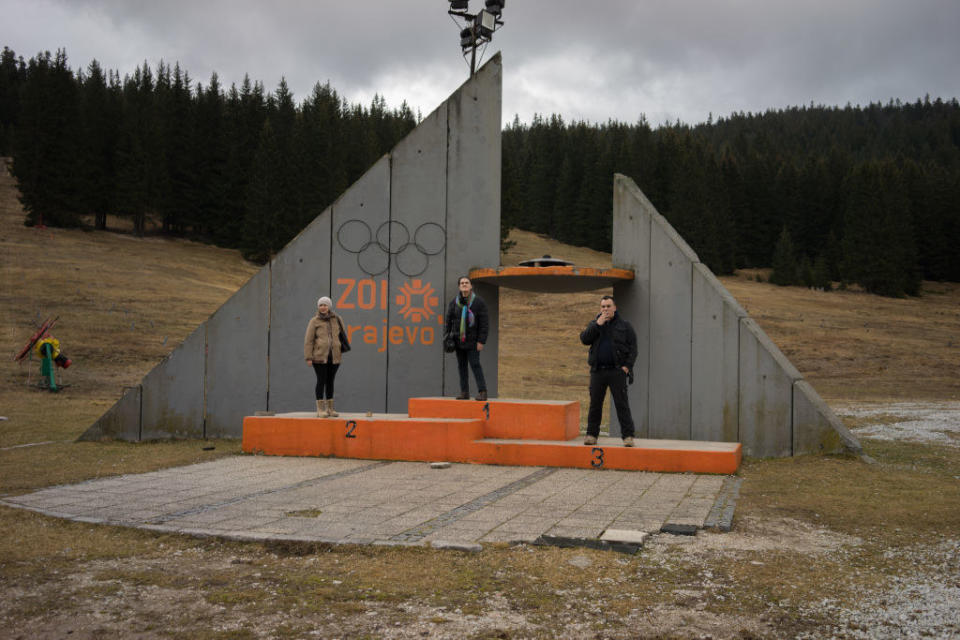
24.Dr. Benjamin Spock, the bestselling author and famed pediatrician, was also an Olympic gold medalist. He and his teammates were rowing champions at the 1924 Paris Olympics.
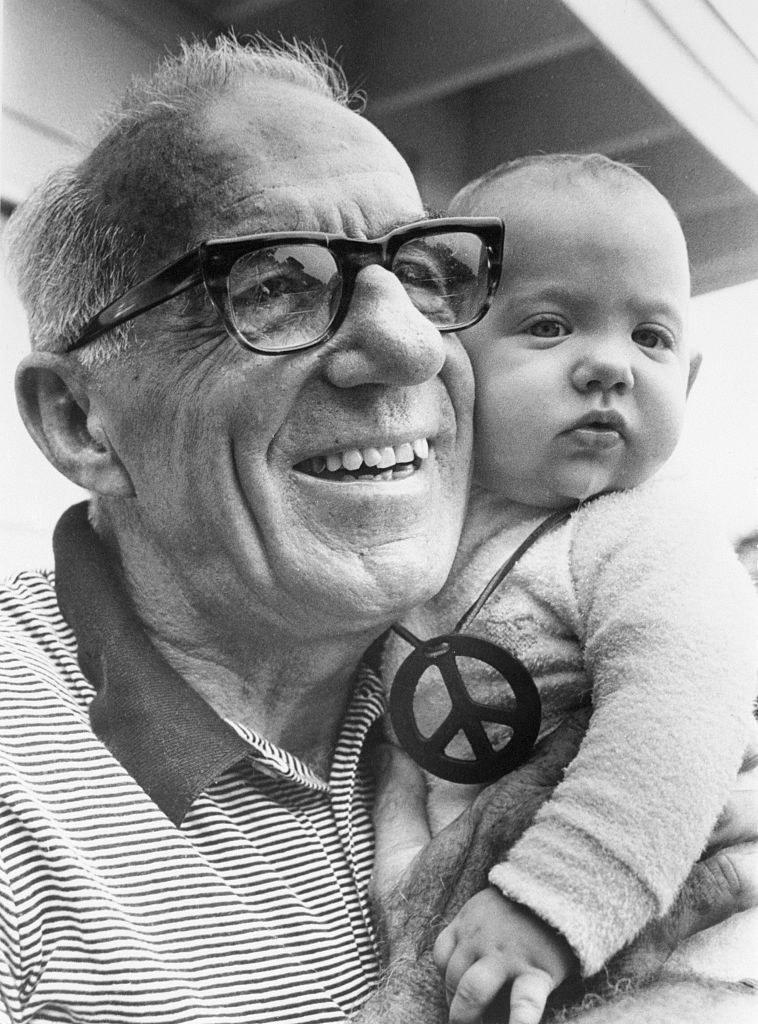
25.Henry Robert Pearce, an Australian rower, encountered an "unexpected challenge" during his quarterfinal race at the 1928 Games: a family of ducks swimming in front of his boat. He paused to let them pass and went on to win the quarterfinal and then the gold medal.

This is Pearce in the 1932 Olympics. If any ducks interrupted him this time, the history books didn't note them.
26.Canadian Olympians have a habit of hiding lucky loonies (one-dollar coins) in stadiums, starting with Trent Evans, who hid a loonie in the center of the ice while preparing the hockey rink for the 2002 Salt Lake City Games. The Canadian teams went on to win gold in both the men and women's events, so the habit stuck. Athletes have hidden loonies (and their two-dollar counterpart, toonies) in the sand of the beach volleyball court, the lining of a swimming pool, and in the green of a golf course, among other places.

27.Live doves, an enduring symbol of peace, were released at every Olympic opening ceremony from 1920 until 1988. But the tradition came to an abrupt end when the birds used in the 1988 Seoul Games flew into the lit Olympic cauldron and incinerated themselves. Now, the doves are of a strictly symbolic nature.
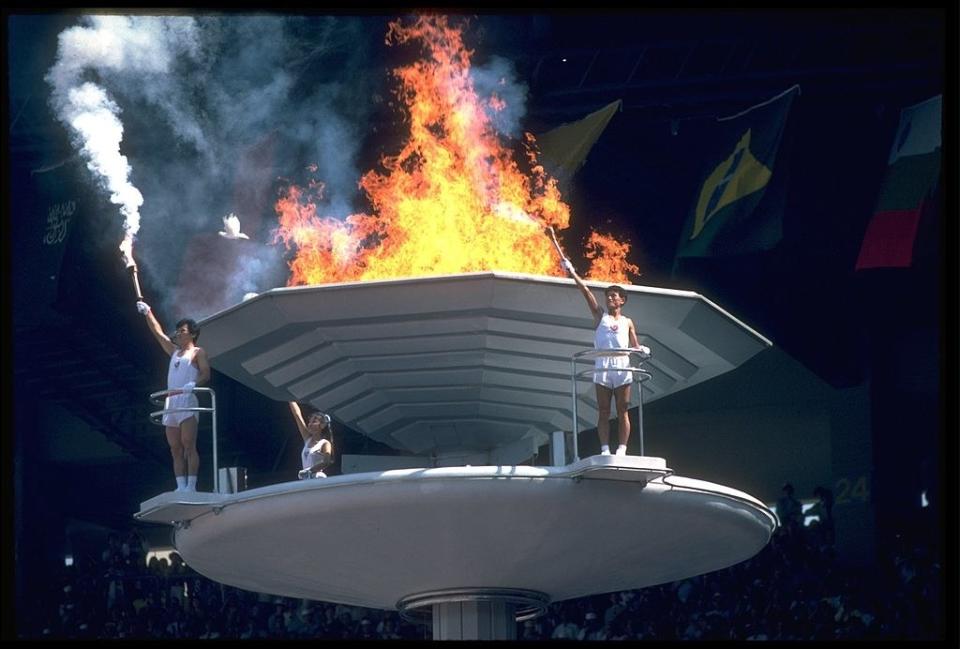
28.And finally: In honor of the 2014 Sochi Games, Canadian beer company Molson installed a fridge of free libations in the Team Canada House. In a fun touch, the fridge remained locked to anyone who wasn't a bona fide Canadian. It was built with an "electronic passport reader, not unlike the ones at airports, that is equipped to recognize the Canadian government seal, the font, and the word 'Canada' on the passport." To put it simply: no Canadian passport, no booze.
